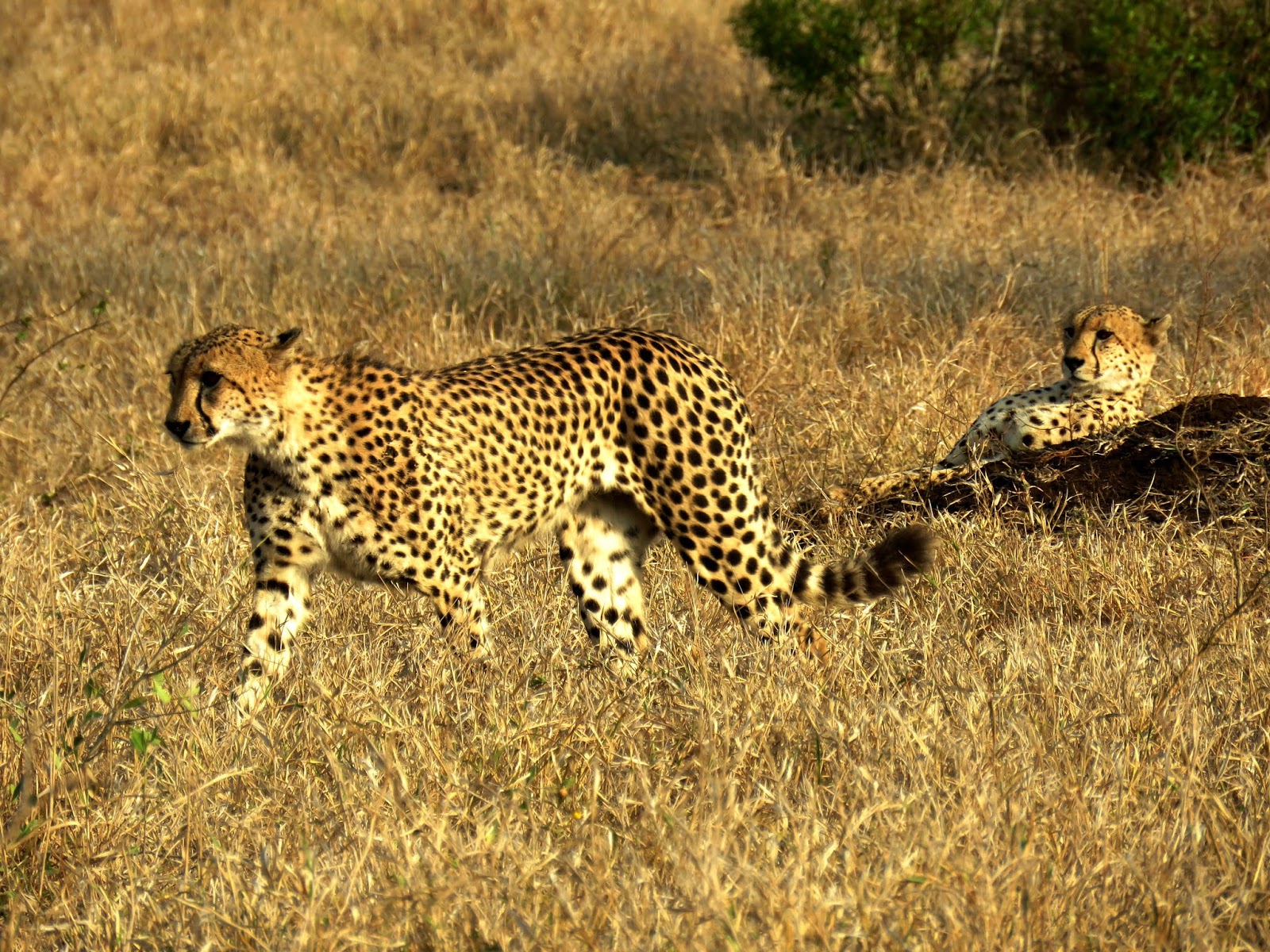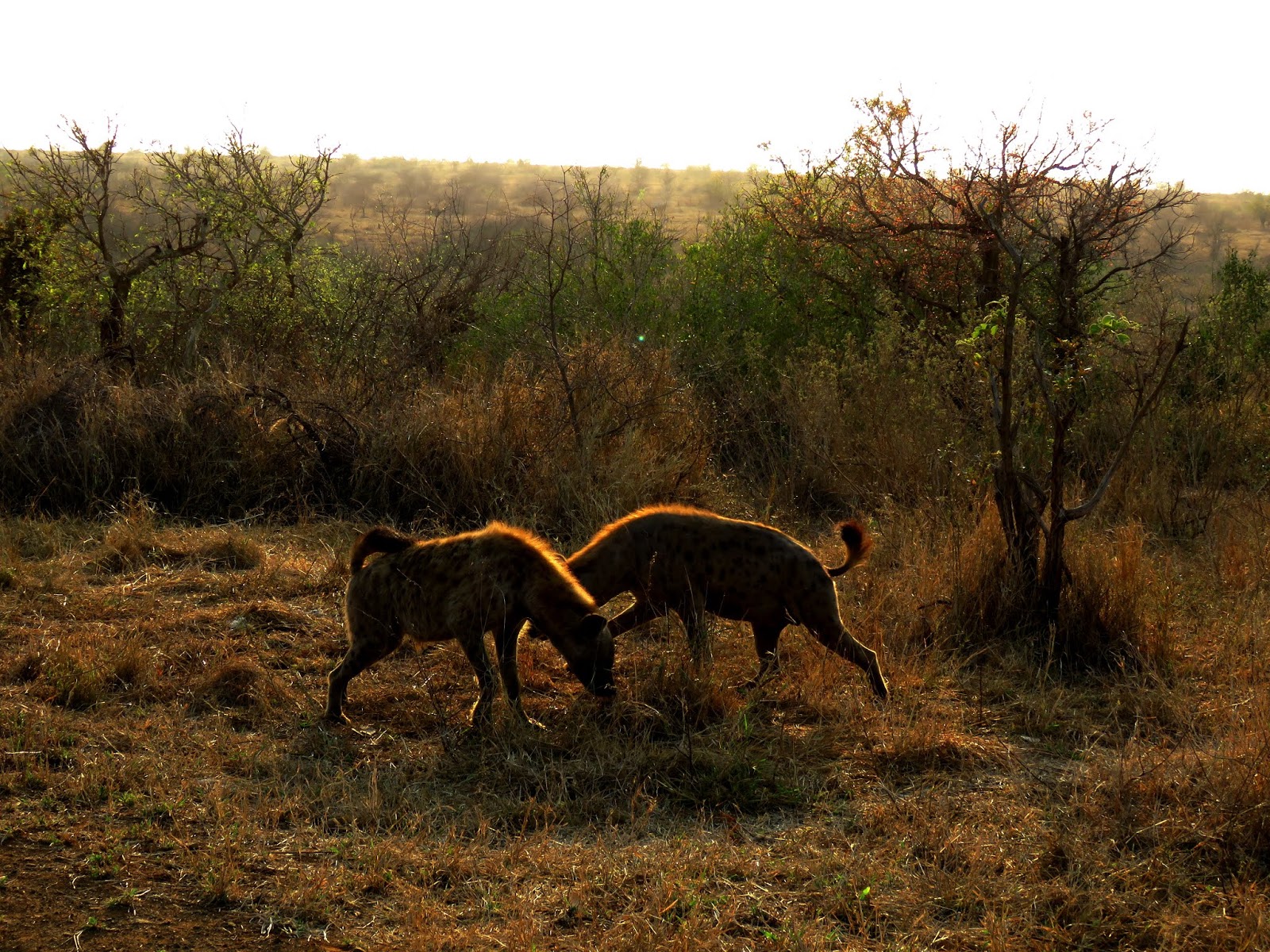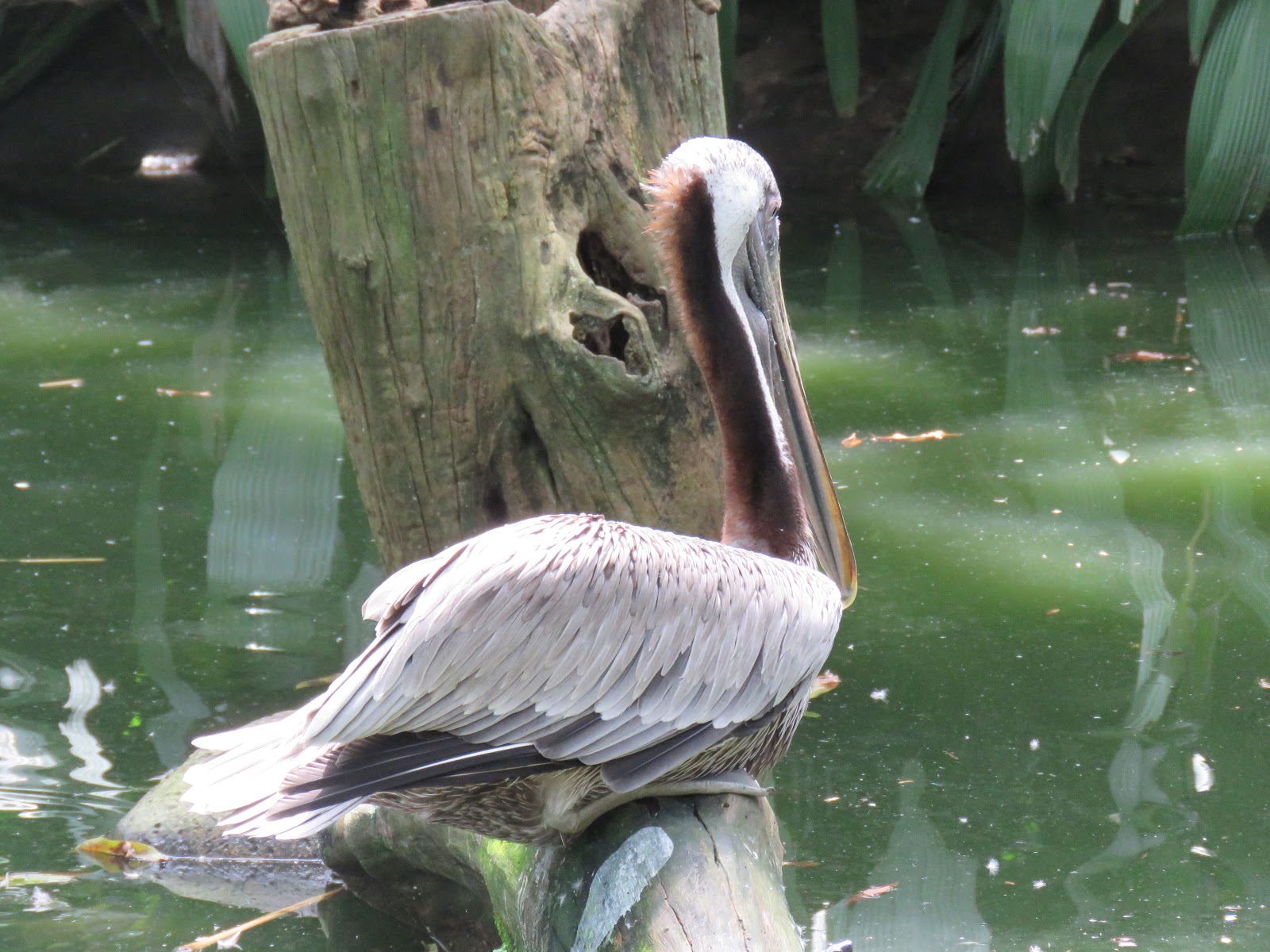 |
| “Black-backed jackals are closely related, both genetically and physically, to side-striped jackals. They are leanly built and quite hard to spot in the wilderness as they swiftly move through the terrain into areas of thicker vegetation, with their long, bushy tails bouncing behind them. They are a ginger color below the middle of their sides and shoulders and a mixture of black and grey above this line on their backs (the origin of their name). They are generally smaller than they appear in photographs and weigh only six to13 kg (13 to 29 lb), the same approximate size as most species of dwarf antelope.” |
“Sighting of the Day in the Bush”
 |
| Tom was scanning the view of the Crocodile River at Ngwenya Restaurant. |
The captions under today’s jackal photos are from this site.
The sighting of the jackal in Kruger National Park on Friday was so fleeting that we could only take a few photos, which are shown above. The middle photo was taken by Tom, our visiting friend. Thanks, Tom, for the contribution!
We were so excited to see the jackal when they are elusive animals as well as the wild dogs and hyenas, as we explained over the past few day’s posts. Please see those posts here and here.
With so few photos and the information we gathered from this site, we decided to include the balance of the facts regarding jackals as shown below:
Status
Black-backed jackals have shown substantial consistency in their population over the past decades, something that other carnivores like wild dogs would very much envy. They are classified as ‘of least concern’ and carry no current threat, nor are there specific populations within South Africa that are endangered. They are prevalent across several countries, which protects them from diseases or over-hunting in many aspects. Population densities vary drastically but are at a relative constant of 2 to 3 individuals per square kilometer within the areas of South Africa where they occur.
Habitat
Over most of the land they occupy, they can be found alongside another jackal species, whether it be the side-striped or golden jackal. They are, however, most common within acacia woodland areas or grasslands, with some of these same trees scattered, which provides some shade from the scorching sun. Oddly enough, they are carnivorous and sometimes forage for food such as insects and are thus not as dependent on the supply of catchable prey like wild dogs, scavenging spotted hyenas, or cheetahs are. When there is prey to be caught, they do, however, take the opportunity and are also regular scavengers alongside vultures and hyenas.
Social Organization
Black-backed jackals are another species that mates for life or is referred to as a monogamous animal. Pairs observed for several years in the Serengeti stayed together for more than two years, with the longest being eight years, and were thought to be divided only by the death of one of them. When this happened, the other would not find a mate. They are also territorial creatures with average territory sizes encompassing an average of close to 2.5 square kilometers. Older young or offspring of previous seasons play an essential role in the caring and survival of new litters and stay on the same territory until they can find or compete for their permanent piece of land.
Social Behavior
Black-backed jackals are one of the three main species of jackal found in Africa, usually patrolling the landscape to scavenge on a kill or find small enough prey to hunt themselves. Lion trails are often followed by the fresh trails of black-backed jackals who pursue them in an attempt to make ends meet by scavenging, something its fellow jackal species are not as profoundly good at. They produce a variety of calls through which they convey messages to one another. They also howl like golden jackals and most wolf species. They are very aggressive animals, and an estimated 38% of their interactions with one another are thought to be of a defensive or aggressive nature.
Reproduction
When the time of the year comes when a pair must or are instinctively ordered to reproduce, they often discourage current pups or young from following them by scolding them or even biting them when they do so. When courtship begins, they go through three stages, starting with scent marking the area. Next, they show very distinct signs of sexual behavior where females lift their tails to reveal a part of their genitals, and males typically rub against them or wag their tails. Other ritualistic behavior also happens at this stage. Genital licking follows along with a few mounts for the next few days, but no complete copulation only follows after this and is repeated daily and frequently. After this, the female finally conceives and will give birth to 3 or 4 pups after 60 to 65 days.
Anti-Predator Behavior
Jackals are not immune to predators and are threatened by several species. Pups are particularly vulnerable and are considered prey to almost any species of eagle, along with sub-adults. Leopards are the primary foes adult jackals look out for. Their only defense or survival option is to run and try to find a decent enough place to shield themselves from danger when a leopard comes around the corner. Still, eagles can generally be chased away by adults when the survival of their young is called into question. There is a fine line between predator and prey in nature, and jackals can be found on either side of that line depending on the conditions.”
 |
| “Black-backed jackals are closely related, both genetically and physically, to side-striped jackals. They are leanly built and quite hard to spot in the wilderness as they swiftly move through the terrain into areas of thicker vegetation, with their long, bushy tails bouncing behind them. They are a ginger color below the middle of their sides and shoulders and a mixture of black and grey above this line on their backs (the origin of their name). They are generally smaller than they appear in photographs and weigh only six to13 kg (13 to 29 lb), the same approximate size as most species of dwarf antelope.” |
We just returned from an almost three-hour drive in Marloth Park and saw the following:
- Kudu
- Elephant
- Giraffe
- Impala
- Lion
- Ostrich
- Cape buffalo
- Waterbuck
- Zebra
 |
| “In Southern Africa, they range from southern Angola, throughout Botswana, Zimbabwe, and Mozambique as well as most of Namibia and the whole of South Africa. Another sub-species of black-backed jackal occurs in parts of Eastern Africa near Ethiopia and Kenya. They are absent from the barren coastline and mainland parts of the Namib Desert mainly due to the insufficient supply of prey. They are, however, very adaptive to human-developed stretches of land and occur close to many rural towns surrounded by farms. They are regular victims of the rifles of livestock farmers because of the way they pester their animals, most often sheep and chickens.” |
No words can express how enthused Tom and Lois are over these daily outings where we see so much wildlife, let alone the excitement right here at our holiday home as visitors come in a steady stream.
Tonight, we’re headed to Aamazing River View restaurant for more Crocodile River viewing. A short time ago, we stopped by the restaurant to make our reservation and select the best table in the house for viewing the action-packed river.
Tomorrow morning, we’re off to Kruger for a self-drive, and depending on whether I have time in the morning, the post will be uploaded a little later than it is today.
Please check back for more on our fun-fill adventures with friends Tom and Lois.
Be well. Be happy.
Photo from one year ago today, October 16, 2018:
































































































































